Introduction: A State on Edge
Punjab, Pakistan’s heartland, is once again under water.
What should have been a season of fertile crops and monsoon relief has turned into a nightmare for millions.
The mighty Ravi, Sutlej, and Chenab rivers are swelling beyond control. Entire towns are submerged. Families are fleeing with whatever little they can carry.
On August 27, 2025, the Government of Pakistan declared a red alert in Punjab, calling in the army to manage the worsening flood crisis. This is being described as the worst flooding in over a decade, raising fears of massive displacement, crop failures, and cultural heritage destruction.
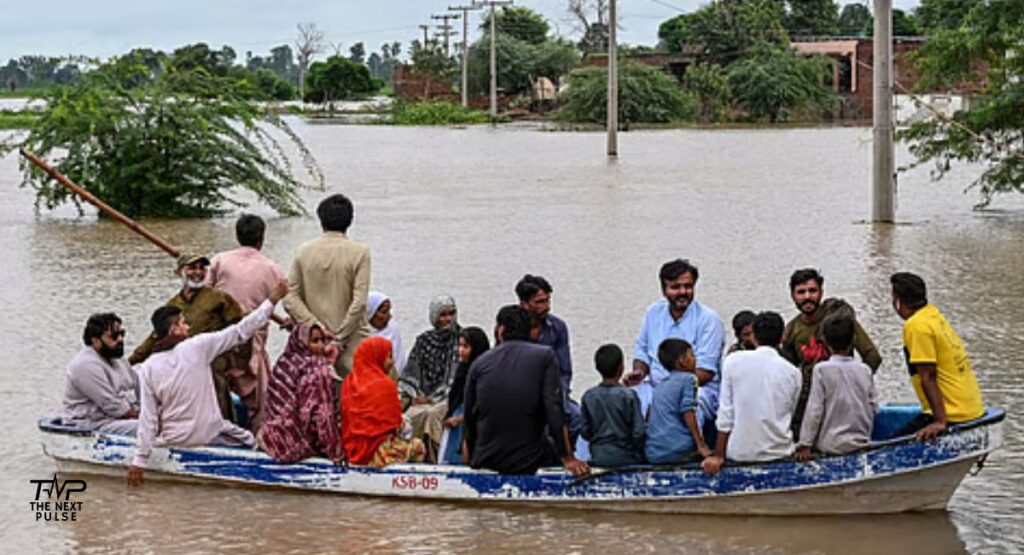
Why Punjab Is on Red Alert
Punjab is no stranger to floods, but this year has been different.
According to the Pakistan Meteorological Department, the region has received record-breaking monsoon rains, far above seasonal averages. Combined with heavy water releases from Indian dams, the downstream flow into Pakistan has crossed dangerous levels.
- At Jassar, the Ravi carried over 200,000 cusecs of water.
- Authorities warn that the flow will intensify at Shahdara in Lahore within hours.
- Villages across Narowal, Kasur, and Okara have already been inundated.
The government’s red alert signals that urban centers like Lahore, Faisalabad, and Multan could face severe flooding if embankments break.
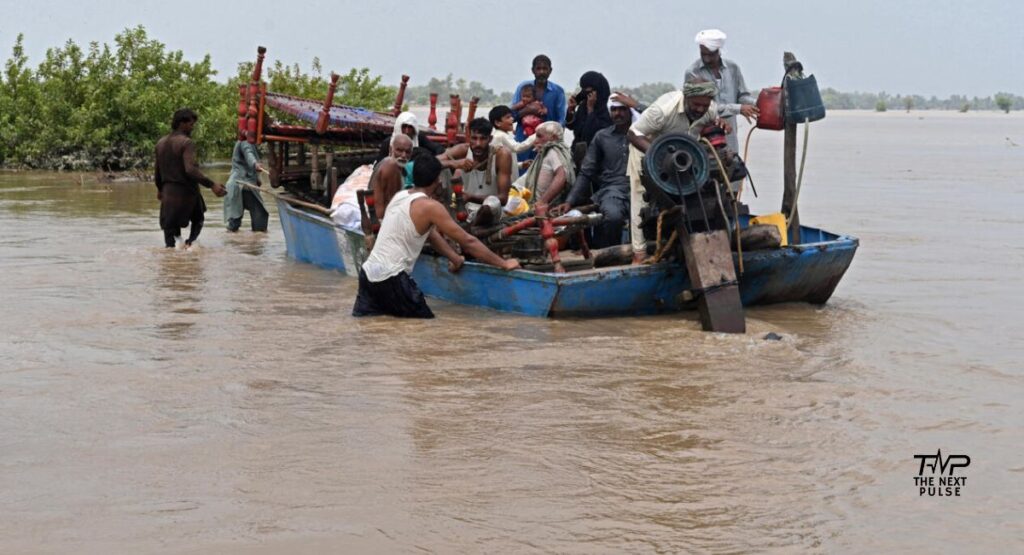
Park View Society, Lahore
In Lahore, Park View Society and nearby residential colonies have been put on high alert. The housing society, located close to the River Ravi’s floodplain, has already seen water seep into boundary areas. Residents are stacking sandbags and moving valuables upstairs, fearing a repeat of the 2014 floods. If Shahdara embankments give way, Park View and other posh societies on Lahore’s outskirts could face major inundation.
Sialkot Under Pressure
In Sialkot, rising waters from the Chenab and tributaries have submerged low-lying villages. The industrial city, known for its sports goods exports, now faces disruptions as roads are blocked and workers struggle to reach factories. Local authorities have evacuated several union councils near Marala Headworks where water is at danger levels. Farmers around Pasrur and Daska report heavy crop losses, adding to the region’s economic strain.
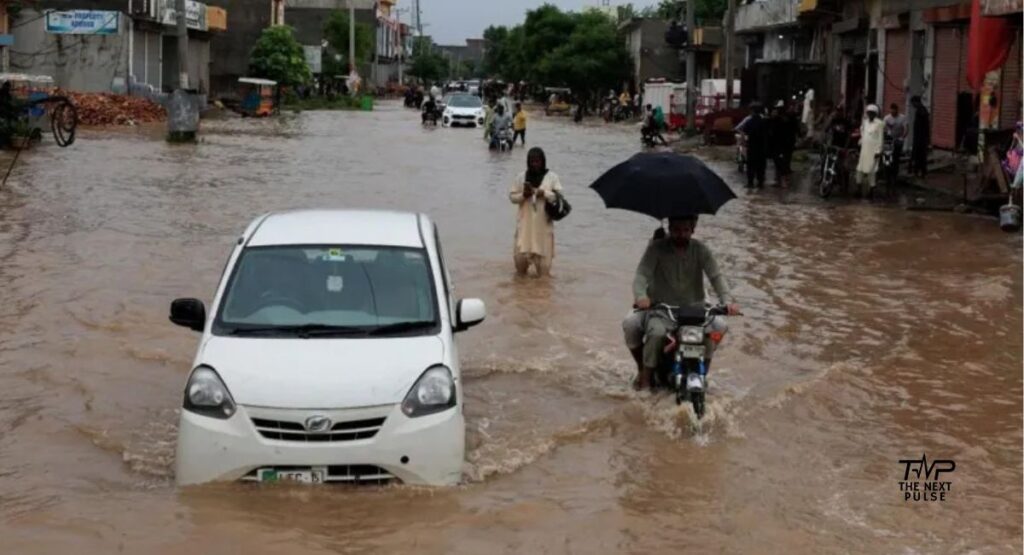
The Army Steps In
Once the red alert was declared, the Pakistan Army was deployed across Punjab’s most vulnerable districts. Their role is critical:
- Rescue operations: Evacuating families trapped in flood-hit villages.
- Relief camps: Setting up temporary shelters with food and medicine.
- River defense: Strengthening embankments and flood barriers to protect cities.
Army boats and helicopters have already pulled hundreds to safety from Narowal and Sheikhupura. Relief trucks carrying ration packs are on standby in Lahore and Gujranwala, ready to move into disaster zones.
Still, officials admit the scale of this year’s flooding could overwhelm even the strongest defenses.
Human Stories From the Ground
Behind the statistics are ordinary people whose lives are being washed away.
- A farmer in Kasur lost his standing rice and maize crops overnight. “This was my only hope for the year,” he told local reporters. “Now I have nothing left.”
- In Narowal, families waded through waist-deep water carrying children on their shoulders, as livestock drowned around them.
- In Lahore, fear is rising as citizens watch the Ravi approach dangerous levels, wondering if the city will face another flood disaster like 2014.
For the poor and landless, the crisis is worse. Without land or savings, they depend entirely on government camps for survival.
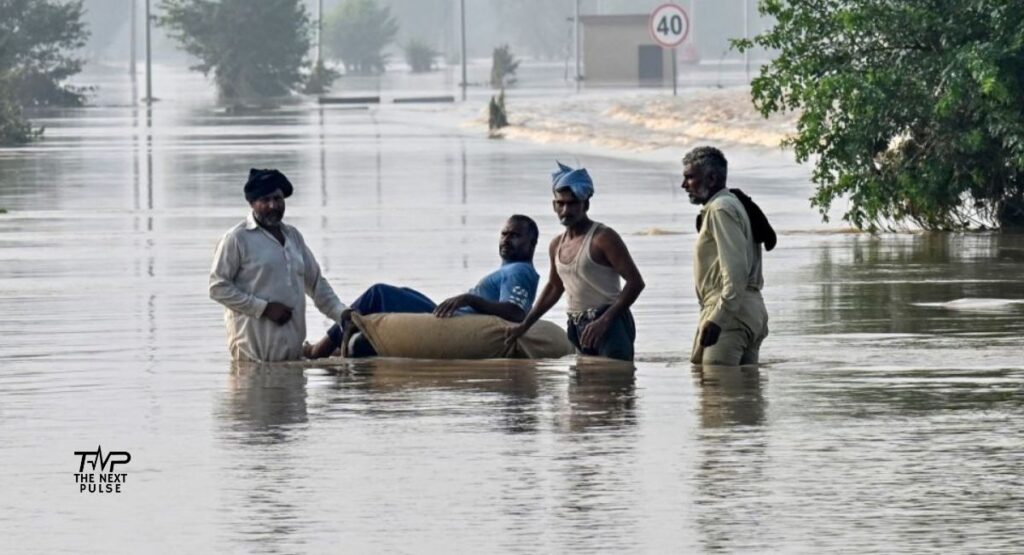
Heritage at Risk
Floods are not only destroying homes and fields. They are threatening Punjab’s cultural and religious heritage.
Earlier this week, the historic Kartarpur Sahib Gurdwara in Narowal — one of Sikhism’s holiest sites — was submerged under 3–4 feet of water. Volunteers had to move the Guru Granth Sahib-ji upstairs for safety. The Kartarpur Corridor linking Pakistan and India is now shut down.
Other heritage sites near riverbanks, including Shahdara Bagh in Lahore, home to Mughal-era tombs, face risk of damage if flood levels rise.
For a region so rich in history, each flood feels like a painful erasure of memory.
Why Are Punjab’s Floods Getting Worse?
Experts point to a deadly mix of climate change and poor water management.
- Climate Change:
Pakistan is among the top 10 countries most vulnerable to climate change. Intense and unpredictable monsoons are becoming the new normal. - Glacial Melt:
Melting glaciers in the north are feeding rivers more heavily than before, raising water levels during peak monsoon. - Cross-Border Water Management:
India’s sudden water releases from dams along the Ravi and Sutlej often leave Pakistani authorities with little time to prepare. - Poor Infrastructure:
Embankments and drainage systems in Punjab are outdated. Once breached, they allow floods to spread quickly into towns and farmland.
This year’s disaster is a stark reminder: without serious investment in climate adaptation, Punjab will keep suffering year after year.
Government Response
The Punjab government, alongside the federal disaster management authority (NDMA), has announced emergency measures:
- Relief funds for displaced families.
- Medical teams deployed to prevent cholera and dengue outbreaks in camps.
- Schools and public buildings converted into temporary shelters.
- International appeal for aid, as Pakistan struggles with both an economic crisis and a natural disaster.
Still, locals complain of delayed response, especially in rural areas. Many argue that the government focuses on saving Lahore while neglecting smaller towns.
Global Sikh & Diaspora Response
The flood at Kartarpur Sahib Gurdwara has struck an emotional chord worldwide.
- Sikh communities in India, Canada, the UK, and the US are holding special prayers.
- Relief funds are being raised in gurdwaras abroad to support both pilgrims and local Pakistani families affected by the floods.
- On social media, hashtags like #PrayForPunjab and #KartarpurFloods are trending, highlighting global solidarity.
- Link to: “Pakistan: Floodwaters Submerge Kartarpur Sahib Shrine“
For many, Punjab’s flood is no longer just a Pakistani tragedy. It is a humanitarian crisis with worldwide concern.//

Punjab’s Fragile Future
As waters rise, Punjab faces a dangerous question: what happens next?
If rain continues and dam releases intensify, Lahore and Faisalabad could face urban flooding within days. If embankments hold, the damage may be contained to villages and farmland.
But one thing is clear: Punjab’s future depends on better climate resilience. Stronger embankments, smarter water-sharing agreements with India, and investment in disaster preparedness are no longer optional — they are urgent.
Conclusion: A Call for Resilience
Punjab has been the food basket of Pakistan for centuries. Today, its fertile fields are drowning, its people are displaced, and its heritage stands on fragile ground.
But history shows that Punjab is also resilient. From wars to partitions to past floods, it has always rebuilt itself. The challenge now is whether Pakistan can move beyond short-term relief and build a long-term shield against climate-driven disasters.
For the millions watching floodwaters swallow their homes, that change cannot come soon enough.
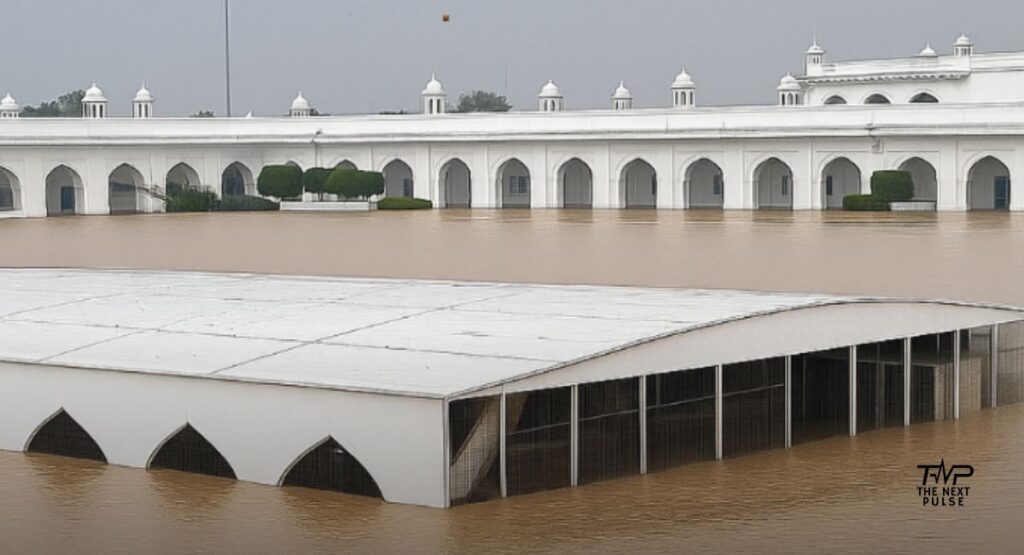

2 thoughts on “Pakistan Flood Crisis: Punjab Declares Red Alert, Army Deployed”